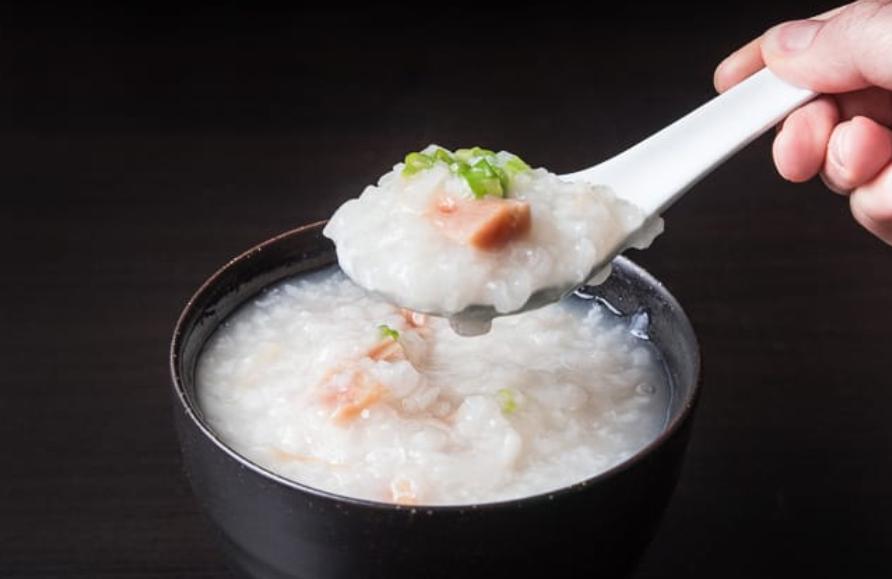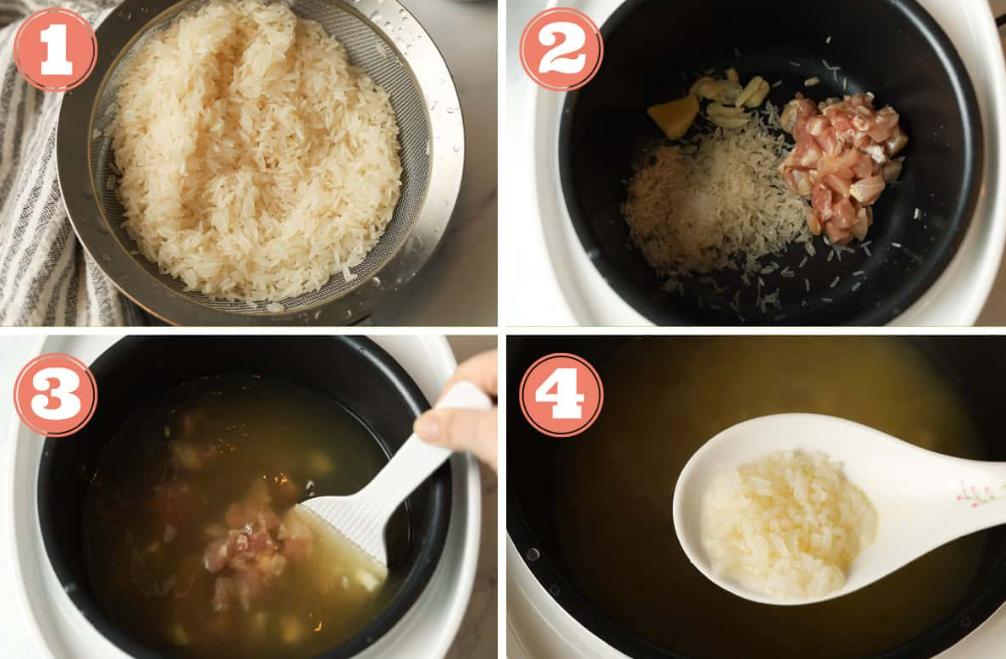Congee, a traditional rice porridge, is a beloved comfort food across many Asian cultures. Its creamy texture and soothing warmth make it ideal for cold days or when you need a gentle, nourishing meal. Using a rice cooker makes preparing congee incredibly simple and hands-free, perfect for busy routines. This guide walks you through creating delicious congee with basic ingredients and minimal effort. Whether you're new to cooking or just want a convenient way to enjoy this classic dish, you'll learn how to make congee in rice cooker to create a hearty, satisfying bowl with ease.

What is Congee and Why Make It in a Rice Cooker?
Congee, also called jook, is a cherished rice porridge popular in many Asian cultures, particularly in China, Taiwan, and Southeast Asia. Known for its versatility, it can be enjoyed plain or with various toppings to enhance its flavor. The slow-cooked rice softens into a creamy, smooth texture, making it both easy to digest and nutrient-rich.
Using a rice cooker to prepare congee brings several benefits. It simplifies the cooking process by allowing you to set it and forget it, unlike the stovetop method, which requires constant attention and stirring. Rice cookers ensure even heat distribution, preventing the rice from sticking. Additionally, they’re easy to clean, offering a stress-free experience. With this method, you’ll always have a comforting, perfect bowl of congee.
Essential Ingredients for Making Congee in a Rice Cooker
To make congee in a rice cooker, you need a few essential ingredients. Here’s what you’ll need:
Gather these ingredients to start your congee-making journey. Adjust seasonings and add-ins based on personal preference or what you have available, making this dish incredibly versatile.
Step-by-Step Guide to Making Congee in a Rice Cooker
Making congee in a rice cooker is a straightforward process. Follow these steps to achieve perfect results:
Step 1: Rinse the Rice
Start by thoroughly rinsing your rice under cold running water until the water runs clear. This important step removes excess surface starch, which can cause the congee to become overly thick or gummy. Proper rinsing ensures a smoother, silkier texture and helps each grain break down evenly during cooking, resulting in a more balanced and enjoyable porridge.
Step 2: Add Water and Set Your Rice Cooker
Place the rinsed rice in the rice cooker. Add your chosen amount of water or broth. If you prefer a thicker congee, go for the lower end of the water range. For a thinner porridge, use more water. Cover the rice cooker and set it to the “porridge” or “congee” setting if available. If not, use the standard cooking setting, but be prepared to add more water as it cooks.
Step 3: Cook and Stir the Congee
Once the rice cooker is set, start the cooking process. Let it cook for about 60-90 minutes, depending on the desired consistency. Check and stir the congee occasionally, ensuring that the rice doesn’t stick to the bottom. If the congee thickens too much, add water or broth in small increments to reach your preferred consistency.
Step 4: Season and Adjust Consistency
When the congee has reached your desired texture, season it with salt to taste. Adjust the seasoning as needed, ensuring it meets your preference. If you're adding proteins, such as chicken, pork, or tofu, or vegetables like mushrooms or spinach, now is the time to incorporate them. Allow the congee to cook until the add-ins are tender and fully integrated into the porridge.
Step 5: Optional Add-ins and Toppings
Enhance your congee by adding delicious toppings such as sliced scallions, a drizzle of soy sauce, sesame oil, or a soft-boiled egg. For extra flavor and nutrition, consider mixing in cooked meats like shredded chicken or pork, tender fish, or traditional preserved vegetables. These additions elevate your bowl from simple porridge to a hearty, satisfying meal.

Tips for Perfect Congee Every Time
Perfecting congee involves a bit of practice. Here are some key tips:
How to Avoid Overcooking Congee
To prevent overcooking, it's important to keep an eye on the congee even when using a rice cooker. Stir the mixture occasionally to ensure even cooking and prevent the rice from sticking to the bottom. If you notice that the congee is cooking too quickly or thickening too much, reduce the heat or switch to the "keep warm" setting. This allows the congee to finish cooking slowly and evenly, ensuring the perfect texture.
Adjusting Consistency for Different Preferences
If you prefer a thicker congee, start with less water—about five to six parts water to one part rice—and gradually add more if needed. For a thinner, more soup-like consistency, use more water from the beginning, such as seven or eight parts water to one part rice. Keep in mind that you can always adjust the liquid near the end of cooking to achieve the exact texture and consistency you want.
Conclusion
Congee is a versatile and comforting dish that’s easy to make in a rice cooker. How to make congee in rice cooker is simple and straightforward, requiring minimal effort and just a few key ingredients. By following this guide, you can create a nutritious meal with ease. Whether you enjoy it plain or with a variety of toppings and add-ins, congee is sure to become a staple in your home. With some basic steps and a rice cooker, you can master the art of making this delicious rice porridge, perfect for any time of the day.
FAQ
How long does it take to make congee in a rice cooker?
The cooking time for congee in a rice cooker is generally between 60 to 90 minutes, depending on your preferred consistency and the model of your rice cooker.
Can I use other types of rice for congee?
Yes, you can use different types of rice, such as jasmine, basmati, or brown rice. Keep in mind that cooking times and the final texture may vary with different rice types. Experiment to find what you enjoy best.
How do I make congee thicker or thinner?
To make congee thicker, use a lower rice-to-water ratio and cook it longer. For a thinner consistency, add more water or broth during the cooking process. Adjust to your preferred texture, and remember that congee will continue to thicken as it cools.
